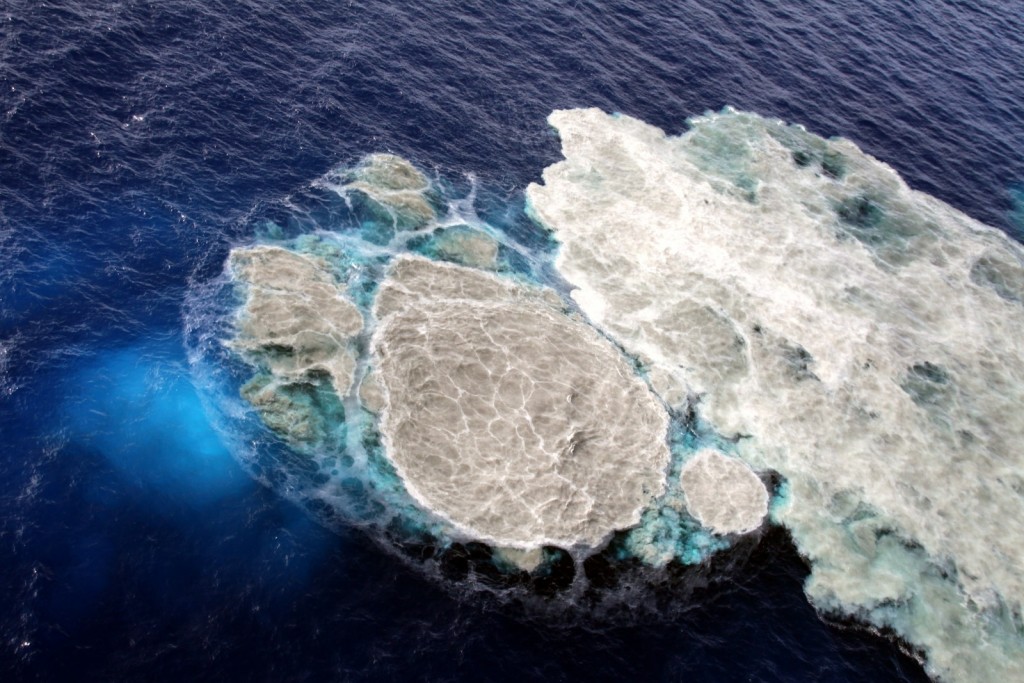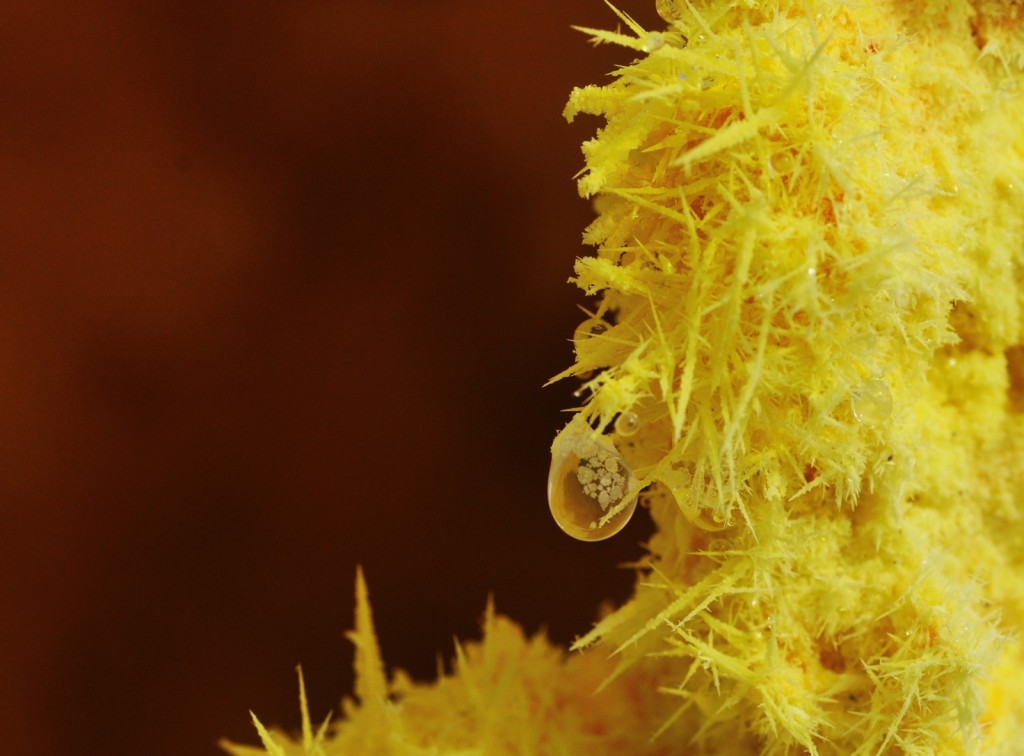This edition of the photo of the approximate week (plus or minus 1 – sorry for my tardiness) is very cool in that it shows when earth processes that are invisible suddenly become very visible. In this case the submarine volcano, El Hierro, is erupting and instead of the usual bursting lava and fireworks display the only evidence of the turmoil going on is this discolouration at the ocean’s surface caused by volcanic ash particles and gases. Despite the submarine location of the volcano it’s activity was by no means hidden as numerous earthquakes indicated that an eruption was imminent.

Suspended volcanic material and gasses caused differents colors in the sea water during the 2011-2012 submarine eruption in El Hierro (Canary Island, Spain) by Laura García-Cañada. (Source)




